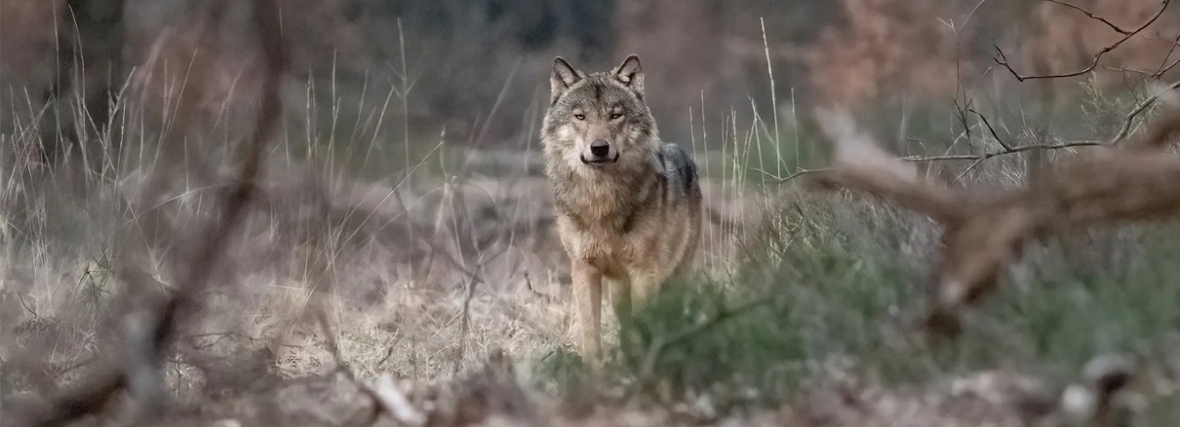
Wolves in the Netherlands feed mainly on wild animals – but also target grazing cattle in areas with less prey
Research
Wolves in the Netherlands mainly feed on wild animals such as wild boar and red and roe deer. But in areas such as Drenthe where these are scarce they also prey on free-roaming cattle used for nature conservation. This is according to new research analysing wolf scat across the country.
The research, carried out by Leiden University’s Centre for Environmental Sciences, the Leo Foundation, the University of Antwerp and the Dutch Mammal Society, gives a detailed picture of the wolves’ diet in 2023. On the Veluwe, wild boar (found in 62% of samples), roe deer (56%) and red deer (32%) were the main prey species. Wolves in Drenthe, where roe deer are virtually the only wild hoofed animals present, fed on roe deer (63% of samples), but also on conservation cattle (43%) and sheep (10%).
Due to the selected cookie settings, we cannot show this video here.
Watch the video on the original website orRegional and seasonal variation
A total of 735 wolf droppings were analysed in 2023. The researchers combined DNA analysis with microscopic examination of hairs, bone fragments and other prey remains found in wolf scat. Their findings show significant regional and seasonal variation in the wolves’ diet. Between April and June – when wolves and hoofed animals are raising young – the consumption of young wild boar and deer calves increases.
‘The variation in diet by region and season shows that wolves are opportunistic animals with a high degree of adaptability’, said Kevin Groen, a researcher at Leiden University. ‘There were also regional differences in the amount of sheep in their diet: in Veluwe wolf territories it made up 5%, compared to 10% in Drenthe.’ These are relatively small proportions compared with the share of roe deer and cattle.
Cattle in Drenthe
One striking finding is the relatively high proportion of conservation cattle in the wolves’ diet in Drenthe. This region has fewer wild hoofed animals due to a ‘zero-population policy’ for red deer, fallow deer and wild boar – meaning these species are virtually absent.
The study suggests that many of the cattle eaten come from herds used for nature management, such as Galloway and Sayaguesa breeds, which graze freely in nature reserves. These herds have long existed without natural predators, making them – especially their calves – more vulnerable. The analysis of wolf scat does not reveal whether the wolves killed the animals themselves or scavenged carcasses of cattle that died naturally.
Scientific insight for policy and public debate
The study of the food habits of wolves in the Netherlands (in Dutch) is part of an ongoing study that will run at least until the end of 2025. The findings are intended to inform public debate and help shape more effective policy around wolves in the Netherlands. This is the first time objective data on wolves’ diet in the Netherlands has been available. Researchers hope this information will support efforts to enable peaceful coexistence between humans and wolves.
